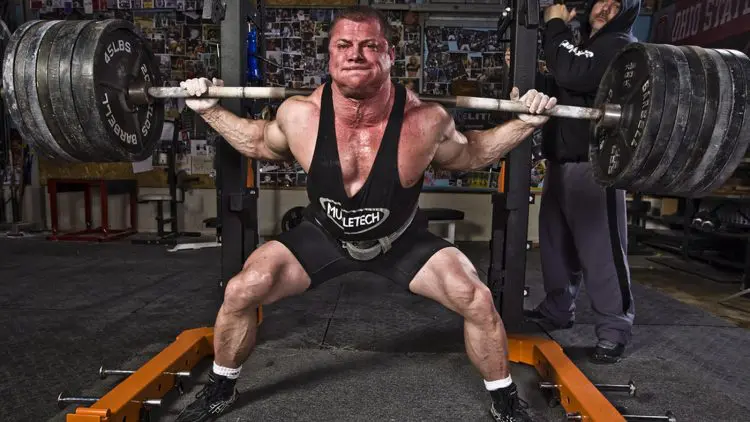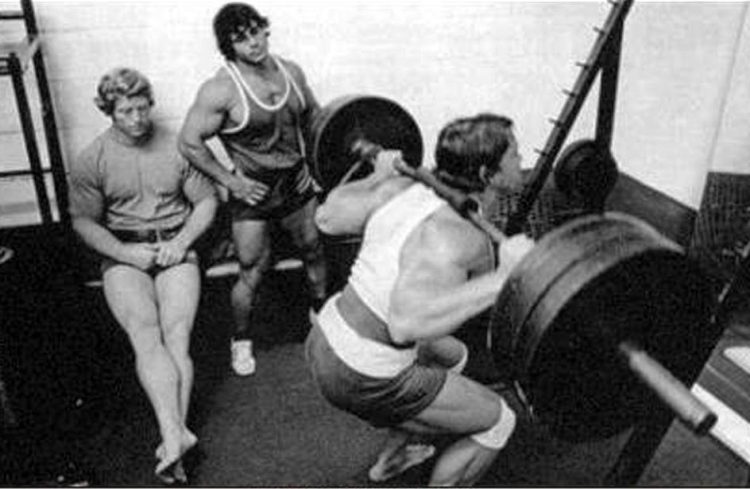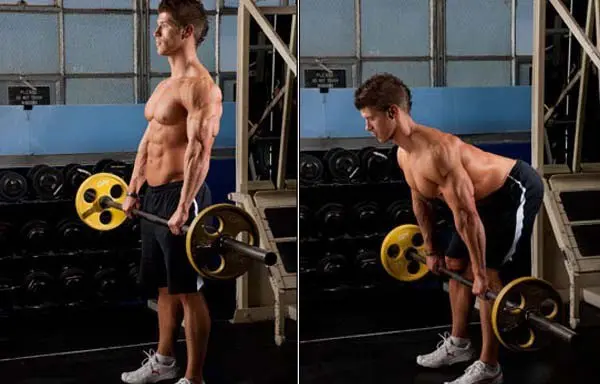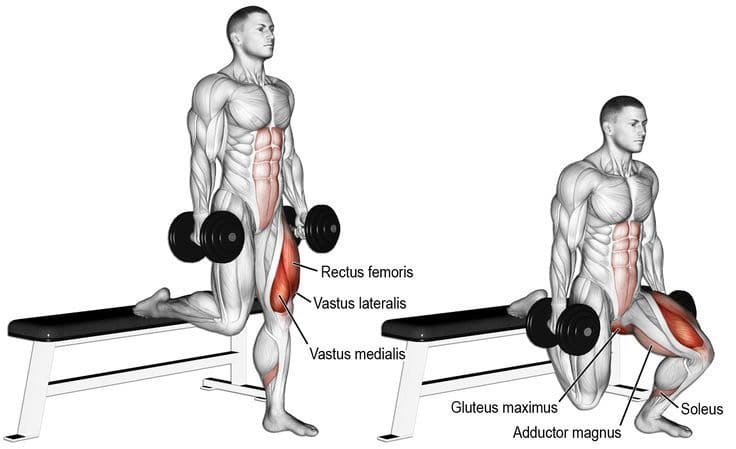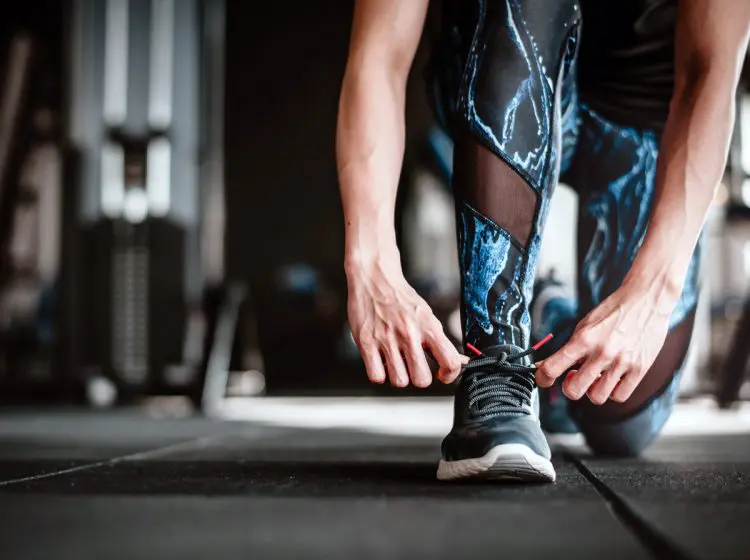Squats are the exercise that most lifters love to hate. They love how squats build muscle and strength in equal measure but hate how hard they are. Squats really kick your butt!
Often called the king of exercises, squats have the power to increase muscle mass all over your body. In fact, entire workouts have been written around squats, such as the infamous old-school 20-rep squat routine.
But, as good an exercise as squats are, they’re also technically and physically demanding. As such, you’ll often see lifters bench pressing more than they can squat. Needless to say, given the size of your legs compared to your arms, that is something that needs to change.
Improving your squat will add slabs of muscle to your legs and improve your overall bodybuilding aesthetics. Plus, it looks cool to slap a bunch of 45-pound plates on a bar and squat them with ease. Like the powerlifters say, if the bar ain’t bending, you’re just pretending!
In this article, we reveal TEN proven ways to boost your squat performance.
10 Ways to Boost your Squat
Whether you want to increase your 1RM, do more reps with a heavy weight, or just become a more proficient squatter, these are the strategies you need to use!
Level Up Your Fitness: Join our 💪 strong community in Fitness Volt Newsletter. Get daily inspiration, expert-backed workouts, nutrition tips, the latest in strength sports, and the support you need to reach your goals. Subscribe for free!
1. Find your optimal squat stance
According to a lot of training texts, you should squat with your feet about shoulder-width apart. While this one-size-fits-all recommendation can work for some lifters, it’s not right for everyone.
Your ideal squat stance depends on a variety of factors, including your height, leg length, mobility, and the position of the barbell on your back. Some lifters need to adopt a narrower than shoulder-width stance, while others need to step out wider.
We can’t tell you your ideal squat stance; you’ll need to determine it for yourself. Experiment by moving your feet in or out to find what works best for you.
One way to do this is to do a single squat jump and note where your feet naturally land. In many cases, this will be close to your best squat stance. If nothing else, it will give you an excellent place to start your stance width experiments.
2. Perfect your squatting technique
A good squat is beautiful to behold, whereas a poorly performed squat can hurt your eyes! Some lifters are their own worst enemies and undermine their performance by squatting with ugly, improper form.
Faults to look for include:
- Knees caving in or dropping out
- Heels lifting off the floor
- Hips rising faster than the bar
- Leaning too far over
- Rounding the lower back
- Weight shifts to the side
So, if you want to lift more weight, you must squat as efficiently as possible. This may involve some minor technical changes or a complete squat overhaul depending on the severity of your technique flaws.
Try videoing your squat so you can analyze your performance. Then, after identifying the problems that are holding you back, spend the next few months fixing them.
Not sure what constitutes good squatting technique? Check out this guide!
3. Squat twice a week (or more)
Squatting correctly is a skill and getting better at squats requires practice. That’s why the best squatters in the world usually squat two or more times per week. One squat workout per week is probably not enough to significantly improve your performance.
That doesn’t mean you should do the same workout several times each week. That would be a good way to get bored and injured. Instead, do several squat variations in rotation to keep your workouts interesting and productive.
For example:
| Workout 1 | Workout 2 | Workout 3 |
| Barbell back squat | Box squat | Paused squat |
| Leg press | Hack squat | Leg extensions |
| Romanian deadlift | Leg curls | Hip thrust |
In addition to rotating exercises workout by workout, it’s also a good idea to use different set and rep schemes. For example, you might do five sets of five one day, four sets of eight the next, and three sets of 12 after that.
4. Strengthen your core
Whether you want to squat more weight, do more reps, or just increase the size of your legs, you need a strong core. The core is the collective term for the muscles of your midsection.
Your core supports your spine during squats and ensures that the forces generated by your legs are transferred efficiently to the barbell on your back. If your core is weak, you may lose stiffness in your spine, which wastes energy and increases your risk of injury.
When it comes to core training, a lot of exercisers focus too much on spinal flexion exercises, such as sit-ups, crunches, and leg raises. However, during squats, your core works isometrically or statically and generates tension without moving.
If you want to train your core for squats, you need to include static core exercises in your midsection workouts.
Good options include:
- Weighted planks
- Russian kettlebell challenge (RKC) planks
- Single-arm farmer’s walks
- Suitcase deadlifts
- Pallof presses
These core exercises are much more squat-specific and will help increase your squat performance far more than many other abs exercises.
5. Build strength out of the hole with assistance exercises
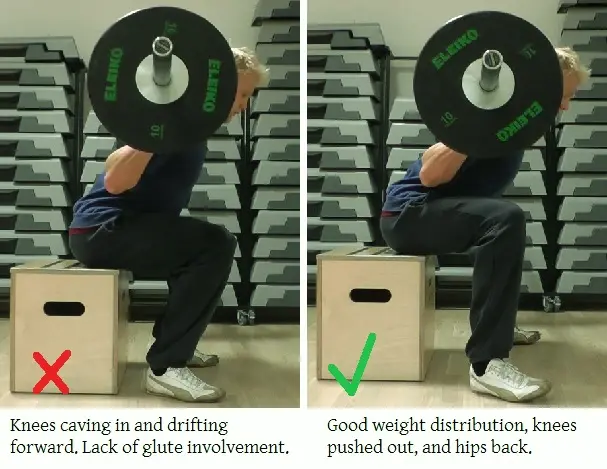
The hole is what powerlifters call the bottom point of the squat, where your thighs are roughly parallel to the floor or below. A lot of squatters get stuck in the hole and are unable to stand back up to complete their rep.
The good news is that there are several exercises you can do that are designed specifically to increase your strength out of the hole. So, if you get stuck at the bottom of your squats, these are the exercises you should use to fix what ails you!
Good out-of-the-hole exercises include:
Level Up Your Fitness: Join our 💪 strong community in Fitness Volt Newsletter. Get daily inspiration, expert-backed workouts, nutrition tips, the latest in strength sports, and the support you need to reach your goals. Subscribe for free!
- Paused squats – hold the bottom squat position for 3-5 seconds per rep
- Box squats
- Squats from pins – start each rep at the bottom with the bar resting on the safety bars of your squat rack
6. Strengthen your lockout with chains or bands
Not all squatters get stuck at the bottom of their reps. Some struggle to complete the last part of the movement and extend their knees. This issue can be fixed by performing squats with chains or resistance bands.
Squatting with chains or bands takes stress off your legs at the bottom of each rep but then increases the load as you near top. This overloads your quads and provides an excellent way to strengthen the end of the range of motion.
As well as overloading the upper range of motion, using bands or chains teaches you to lift more explosively and develops your ability to use speed to blast past your sticking points.
Bands and chains have a similar effect.
If your gym doesn’t have chains, buy a set of bands and keep them in your workout bag. Bands can also be used for bench presses, deadlifts, and several other exercises.
7. Beef up your posterior chain
Squats are often thought of as a knee-dominant exercise. This makes a lot of sense, given how hard the quadriceps work during squats.
However, while the quads ARE doing a lot of the work during squats, the muscles on the back of your body are very active too. In fact, you can’t do squats without involving your glutes, hamstrings, or lower back. These muscles are collectively called the posterior chain.
Like a weak core can undermine your squat performance, so too can a weak posterior chain. You need strong glutes, hammies, and spinal effectors to avoid falling forward during squats.
Make sure your posterior chain is as strong as possible by including a couple of the following exercises in your squat workouts:
- Romanian deadlifts
- Rack pulls
- Good mornings
- Reverse hyperextensions
- Hyperextensions
- Cable pull-throughs
- Hip thrusts
8. Increase bar speed with plyometrics
While you won’t be able to lift a heavy weight with blistering speed, that should still be your intent. Trying to lift the weight quickly will increase muscle fiber recruitment and help you blast through the sticking points of the squat.
One way to do this is with a type of training called plyometrics.
Plyometric training involves rapidly loading and then unloading your muscles to trigger something called the stretch-shortening reflex, or SSR for short. This teaches you to recruit more muscle fibers and generate more force so you can lift heavy weights more quickly.
Examples of plyometric exercises include:
- Squat jumps
- Hurdle jumps
- Box jumps
- Depth jumps
You can read about all these and other exercises in our guide to plyometric training.
9. Do some unilateral training
Squats are a bilateral or two-sided exercise. So, it makes sense to include other bilateral leg exercises in your squat workouts, such as leg presses, box jumps, paused squats, etc. However, there is value in adding unilateral or single-sided exercises to your squat-enhancing workouts.
Even the best lifter usually has one leg stronger than the other. Left-to-right strength imbalances can limit your squat performance and could even lead to injury. However, unilateral exercises can help fix any such imbalances.
Also, when squatting heavy weights, there is a tendency for the knees to roll in (weak abductors) or out (weak adductors). Both of which will reduce your squat performance and could lead to injuries. Unilateral exercises increase inner and outer hip and thigh engagement, and are an effective way to fix these problems.
There are several unilateral leg exercises that can improve your bilateral squat, including lunges, single-leg Romanian deadlifts, and Bulgarian split squats.
Read all about the best unilateral leg exercises here.
10. Upgrade your shoes
When you are just starting out, you can wear almost any athletic shoe for squats. But, as you get stronger and the weights get heavier, your choice of shoes become more important.
Shock-absorbing running shoes compress and distort under heavy loads, leading to an unstable platform for squatting heavy weights. When you’ve got several hundreds of pounds resting on your upper back, the last thing you need is wobbly feet!
If you are serious about improving your squat, it may be time to upgrade your footwear. Solid soled weightlifting shoes are one of the best choices, and the raised heel makes it easier to squat deep. CrossFit shoes are also a better option than spongy running shoes.
However, if you squat with a very wide stance, you may find that minimalist shoes with a low heel are better than weightlifting shoes. For example, Chuck Taylors are a popular choice with powerlifters.
Boost Your Squat – Wrapping Up
Whatever you are training for, squats will help you get there faster. Bodybuilders mostly squat to build bigger, more muscular legs, while athletes from all sports do squats to develop strength and power. They’re also the first lift contested in powerlifting and frequently feature in strongman competitions.
While there is nothing wrong with using squats as a strength and muscle-building tool, you may find it rewarding to see just how far you can progress with this exercise, using it to test your strength.
If you are serious about taking your squats to the next level, the strategies in this article will undoubtedly help. Training for a bigger squat will also lead to more muscular legs and strength increases throughout your body.
One word of warning; while squats ARE a great exercise, they can also be dangerous, so always squat in a power rack with the safety bars in place. Getting pinned under a heavy bar can cause serious injury.

